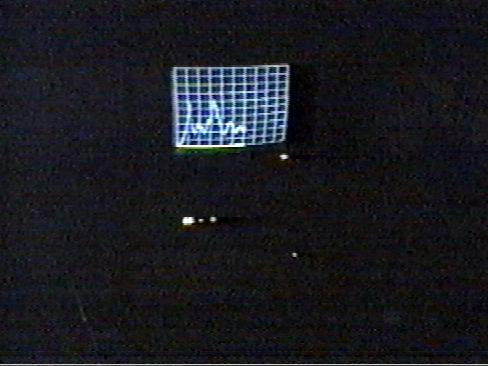Part III: Confirmation: Does it Work?
A. Methodology
i. Theory: Relative Particle Density may
be estimated from the relative spectral density of one part of the
system to another. The derivation is based on the Debye cell length
in plasmas. [2]
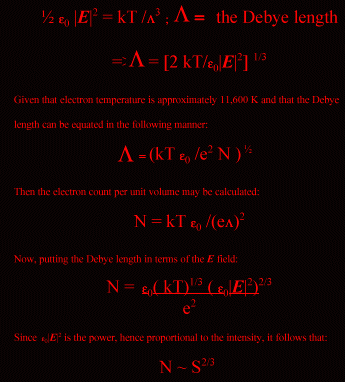
ii. Practice.
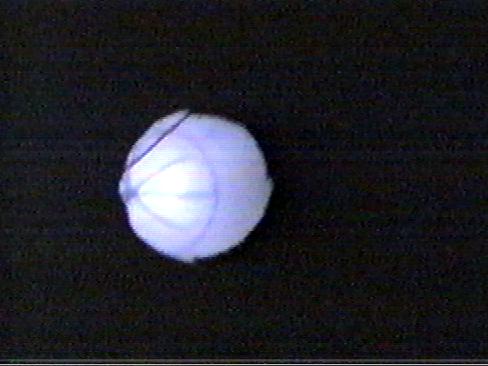
A hood was constructed to allow light from only select regions of the device
to escape.
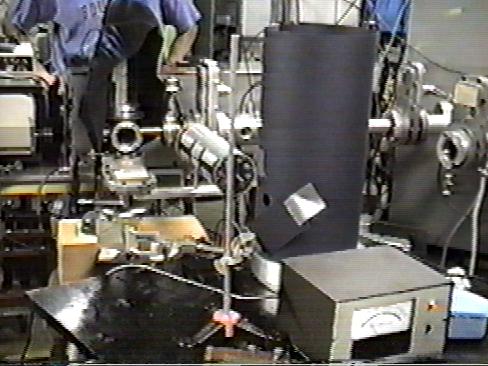
The inner hood was made of black cardboard, to absorb as much light as
possible, minimizing reflection. A second hood, made of 8" SCHD-40
PVC pipe, was then made to slip over the inner hood and bell jar.
This outer hood also serves as protection against implosion shrapnel, in
case the electron beam should cook through the bell jar. Note the
different holes bored in the hood. These can be rotated in line with
the mirror and the hole in the inner hood, which is all aligned to reflect
into the spectrometer port, visible here with a laser light shining through
for the purpose of alignment. On the
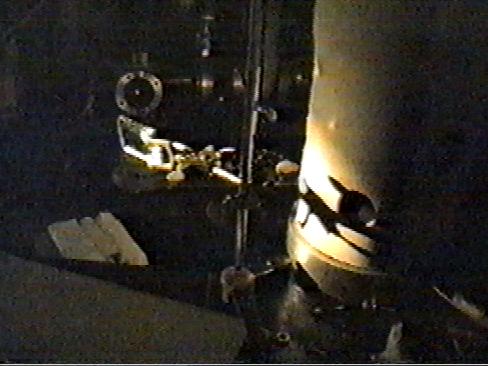
other side of the hood, a hole directly opposite to the "peephole" was
bored to check that the alignment laser went through the center.
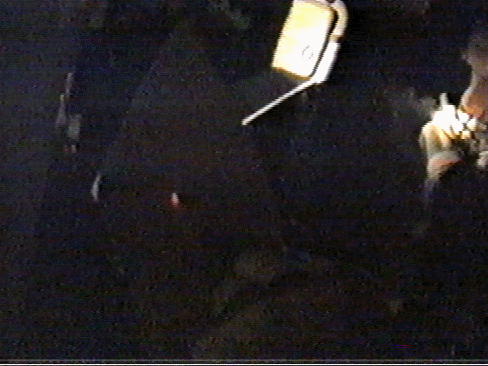
Once satisfied with this tedious, time consuming procedure, the spectrometer
then would be set to a known line and final adjustments of the mirror would
be made. Then and only then would spectra be taken.
